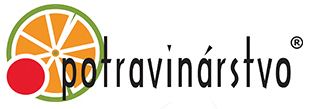A comparative study of Sus scrofa M. longissimus dorsi with different changes in quality
DOI:
https://doi.org/10.5219/769Keywords:
muscle proteins, pork, PSE, DFD, electrophoresisAbstract
The comparative study of Sus scrofa muscle tissue with different defects of quality was carried out. Such analysis methods as determination of water-binding capacity (WBC) and pH values, microstructural studies, proteome methods, mass spectrometric methods, high performance liquid chromatography (HPLC) and determine the concentration of cathepsin D, calpain 3 and myoglobin were applied in current study. DFD meat was characterized by high pH (6.2) and WBC (93.18%), while PSE - low pH (5.5) and WBC (79.19%). pH and WBC values in NOR pork was medium and averaged 5.9 and 92.05%, respectively. Microstructural studies revealed that fiber in exudative pork was the least and averaged 39.7 µm, normal pork was characterized by diameter of muscle of 45.5 µm, while DFD pork ‑ 48.3 µm. Protein composition of Sus scrofa muscle tissues were also investigated by one-dimensional and two-dimensional electrophoresis. 6 protein fractions were identified by mass spectrometry and confirmed as potential biomarkers of pork quality defects in meat and processes meat product. It also has been shown that PSE pork contains 8 characteristic peptides, NOR - 14, DFD - 18. Cathepsin D, calpain 3 and myoglobin content were measured in pork of different categories. The highest content of cathepsin D, calpain 3 and myoglobin was noticed in PSE pork and averaged 82.16 ±3.30 ng.mL-1; 1.280 ±0.082 ng.mL-1; 3.973 ±0.506 ng.mL-1, respectively. Since the study was carried out on samples of meat 24 hours after slaughter, this work had the prospect to further study of meat with different defects of quality during long-term autolysis.
Downloads
Metrics
References
Adzitey, F., Nurul, H. 2011. Pale Soft Exudative (PSE) and Dark Firm Dry (DFD) Meats: Causes and measures to reduce these incidences. International Food Research Journal, vol. 18, p. 11-20.
Barbut, S., Sosnicki, A.A., Lonergan, S. M., Knapp, T., Ciobanu, D. C., Gatcliffe, L. J., Huff-Lonergan, E., Wilson, E. W. 2008. Progress in reducing the pale, soft and exudative (PSE) problem in pork and poultry meat. Meat science, vol. 79, no. 1, p. 46-63. https://doi.org/10.1016/j.meatsci.2007.07.031 PMid:22062597 DOI: https://doi.org/10.1016/j.meatsci.2007.07.031
Bazhov, G. M., Kryshtop, E. A., Baranikov A. I. 2013. Technological characteristics of pork with PSE and DFD defects. Scientific journal KubGAU, vol. 89, p. 973-984.
De Almeida, A. M., Bendixen, E. 2012. Pig proteomics: a review of a species in the crossroad between biomedical and food sciences. Journal of Proteomics, vol. 75, no. 14, p. 4296-4314. https://doi.org/10.1016/j.jprot.2012.04.010 PMid:22543283 DOI: https://doi.org/10.1016/j.jprot.2012.04.010
Flores, M., Toldra, F. 2014. Optimization of Muscle Enzyme Colorimetric Tests for Rapid Detection of Exudative Pork Meats. Food Analytical Methods. vol. 7, no. 9, p. 1903-1907. https://doi.org/10.1007/s12161-014-9834-6 DOI: https://doi.org/10.1007/s12161-014-9834-6
Kopeikina, L. V., Chudzickaya, E. V. 2005. The study of quality and safety of pork. Eastern Federal University. Economics and management, no. 2, p. 54-60.
Kovalyov, L. I., Shishkin, S. S., Kovalyova, M. A., Ivanov, A. V., Vostrikova, N. L., Chernukha, I. M. 2013. Proteomic study of proteins in pork and meat products. All about meat, vol. 3, р. 32-34.
Laemmli, U. K. 1970.Cleavage of Structural Proteins during the Assembly of the Head of Bacteriophage T4. Nature, vol. 227, p. 680-685. https://doi.org/10.1038/227680a0 PMid:5432063 DOI: https://doi.org/10.1038/227680a0
Luca, A. D., Elia, G., Hamill, R., Mullen, A. M. 2013. 2D DIGE proteomic analysis of early post mortem muscle exudate highlights the importance of the stress response for improved water-holding capacity of fresh pork meat. Journal of Proteomics, vol. 13, no. 9, p. 1528-1544. https://doi.org/10.1002/pmic.201200145 PMid:23456991 DOI: https://doi.org/10.1002/pmic.201200145
O'Farrell, P. H. 1975. High resolution two-dimensional electrophoresis of proteins. The Journal of Biological Chemistry, vol. 250, no. 10, p. 4007-4021. DOI: https://doi.org/10.1016/S0021-9258(19)41496-8
Poznyakovskiya, V. M., Gorlov, I. F., Tikhonov, S. L., Shelepov, V. G. 2015. About the quality of meat with PSE and DFD properties. Foods and Raw Materials, vol. 3, no. 1, p. 104-110. https://doi.org/10.12737/11244 DOI: https://doi.org/10.12737/11244
UniProtKB, 2002-2016. Protein Knowledgebase [online] s.a. [cit. 2017-01-17] Available at: http://www.uniprot.org.
Shipulin, V. I. 2009. Principles of the development of alternative variants of rational technologies of meat products of new generation with adapted food additives, Avt. diss. Dr. technical sciences, Stavropol, Russia. p. 44.
Downloads
Published
How to Cite
Issue
Section
License
This license permits non-commercial re-use, distribution, and reproduction in any medium, provided the original work is properly cited, and is not altered, transformed, or built upon in any way.






























